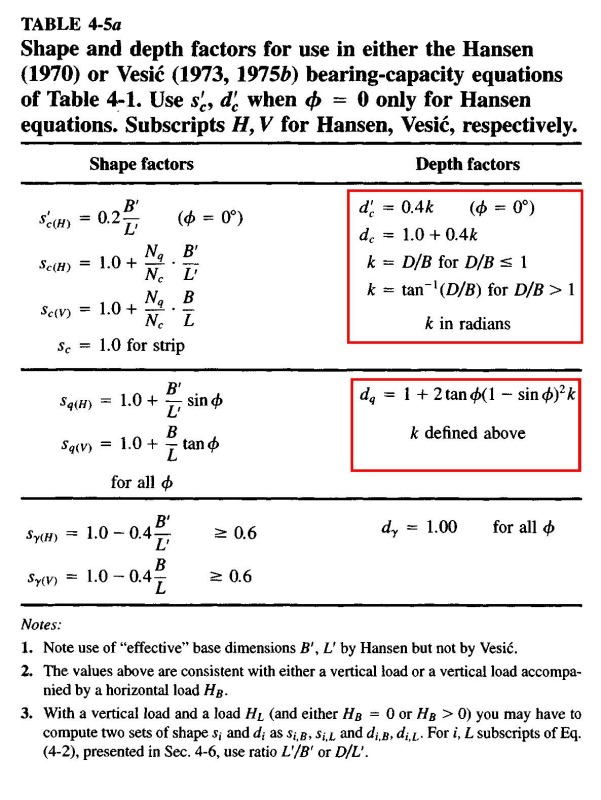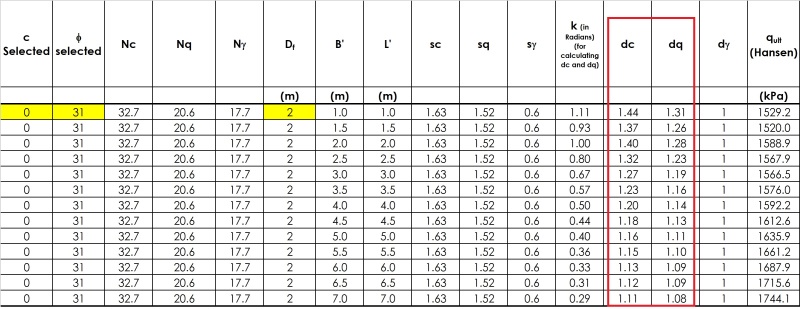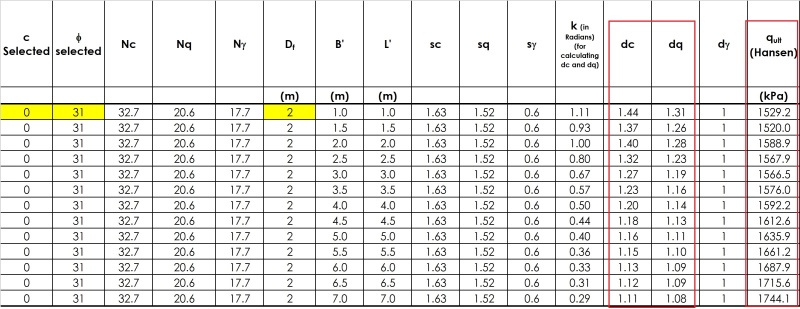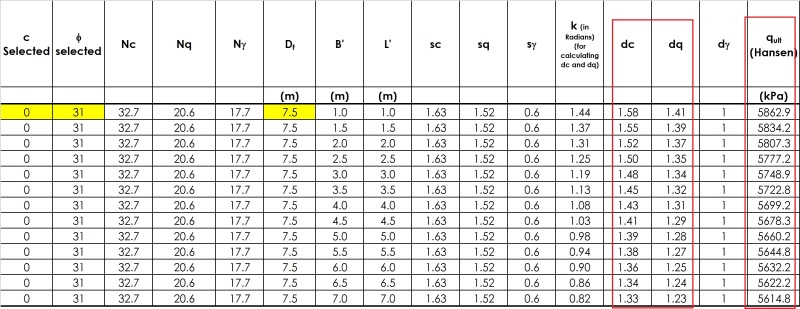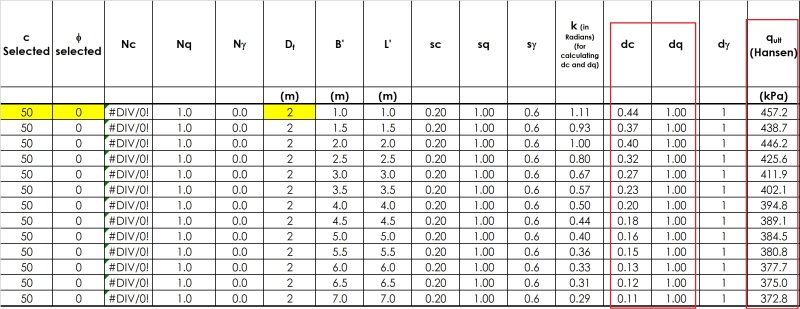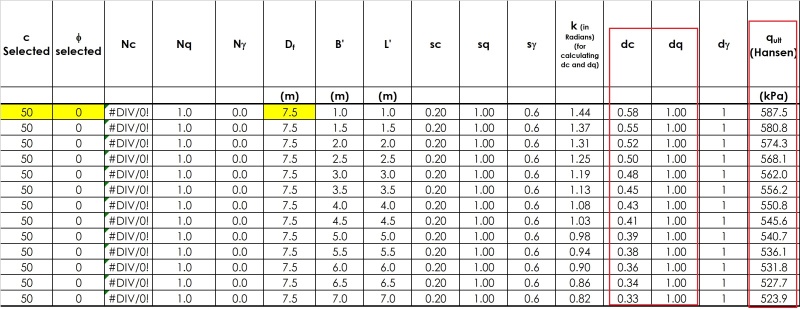As a general concept explained in geotechnical engineering textbooks, shear based bearing capacity is explained to be increasing with foundation width. Since the 'width' component in Terzaghi's Bearing capacity equation increases, hence is the corresponding increase in ultimate bearing capacity in shear. Physical understanding of this phenomenon is also simple that with increase in foundation width length of failure path increases; longer failure path offers greater resistance to failure (i.e., 'unit resistance' multiplied by 'length of failure path' would be larger). A typical figure is shown in the attachment.
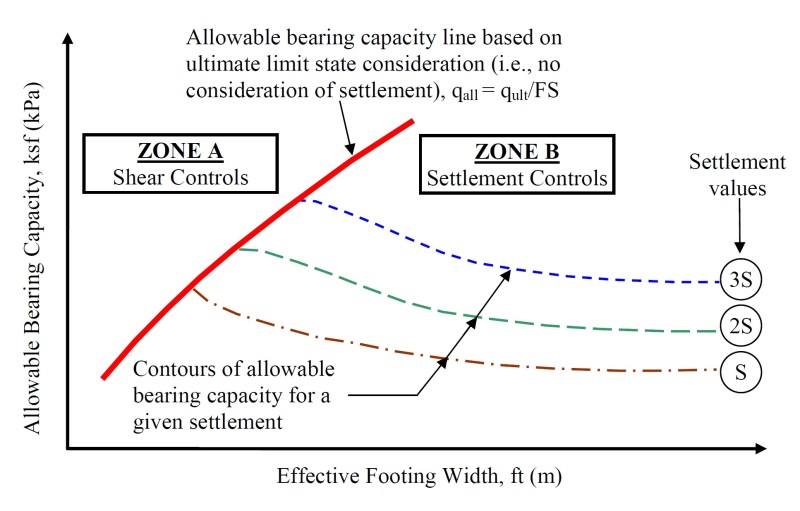
The use of Mayerhof or Hansen bearing capacity equations (i.e., by incorporating shape, depth, inclination factors, etc.) however, gives result which are opposite to the trend explained in previous passage. By using Mayerhof or Hansen factors ultimate bearing capacity appears to decrease with foundation width. A close look into the data show that main reason for this decrease are the values of depth factors 'dc' and 'dq' which decrease with foundation width. I have been searching for a physical explanation of this decrease in ultimate bearing capacity with foundation width, but could not find any. I have even gone through original papers Mayerhof (1963) and Hansen (1970) but they are also silent in this regard. Any valuable input in this regard is appreciated.

The use of Mayerhof or Hansen bearing capacity equations (i.e., by incorporating shape, depth, inclination factors, etc.) however, gives result which are opposite to the trend explained in previous passage. By using Mayerhof or Hansen factors ultimate bearing capacity appears to decrease with foundation width. A close look into the data show that main reason for this decrease are the values of depth factors 'dc' and 'dq' which decrease with foundation width. I have been searching for a physical explanation of this decrease in ultimate bearing capacity with foundation width, but could not find any. I have even gone through original papers Mayerhof (1963) and Hansen (1970) but they are also silent in this regard. Any valuable input in this regard is appreciated.

